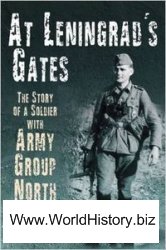Evolution and Prehistory comes with a comprehensive supplements program to help instructors create an effective learning environment both inside and outside the classroom and to aid students in mastering the material.
Supplements for Instructors
ONLINE INSTRUCTOR'S MANUAL AND TEST BANK
The Instructor’s Manual offers detailed chapter outlines, lecture suggestions, key terms, and student activities such as video exercises and Internet exercises. In addition, there are over seventy-five chapter test questions including multiple choice, true/false, fill-in-the-blank, short answer, and essay.
POWERLECTURE WITH JOININ™ AND EXAMVIEW®
On CD or DVD, this one-stop class preparation tool contains ready-to-use Microsoft PowerPoint" slides, enabling you to assemble, edit, publish, and present custom lectures with ease. PowerLecture helps you bring together text-specific lecture outlines and art from Haviland’s text along with videos and your own materials—culminating in powerful, personalized, media-enhanced presentations. The JoinIn" content (for use with most “clicker” systems) available within PowerLecture delivers instant classroom assessment and active learning. Take polls and attendance, quiz, and invite students to actively participate while they learn. Featuring automatic grading,
ExamView® is also available within PowerLecture, allowing you to create, deliver, and customize tests and study guides (both print and online) in minutes. See assessments onscreen exactly as they will print or display online. Build tests of up to 250 questions using up to twelve question types and enter an unlimited number of new questions or edit existing questions. PowerLecture also includes the text’s Instructor’s Resource Manual and Test Bank as Word documents.
WEBTUTOR ON BLACKBOARD AND WEBCT
Jumpstart your course with customizable, rich, text-specific content within your Course Management System. Simply load a content cartridge into your course management system to easily blend, add, edit, reorganize, or delete content, all of which is specific to Haviland et al.’s Evolution and Prehistory, 9th edition, and includes media resources, quizzing, weblinks, discussion topics, and interactive games and exercises.
WADSWORTH ANTHROPOLOGY VIDEO LIBRARY
Qualified adopters may select full-length videos from an extensive library of offerings drawn from such excellent educational video sources as Films for the Humanities and Sciences.
ABC ANTHROPOLOGY VIDEO SERIES
This exclusive video series was created jointly by Wadsworth and ABC for the anthropology course. Each video contains approximately 60 minutes of footage originally broadcast on ABC within the past several years. The videos are broken into short 2- to 7-minute segments, perfect for classroom use as lecture launchers or to illustrate key anthropological concepts. An annotated table of contents accompanies each video, providing descriptions of the segments and suggestions for their possible use within the course.
AIDS IN AFRICA DVD
Southern Africa has been overcome by a pandemic of unparalleled proportions. This documentary series focuses on the new democracy of Namibia and the many actions there to control HIV/AIDS. Included in this series are four documentary films created by the Periclean Scholars at Elon University: (1) Young Struggles, Eternal Faith, which focuses on caregivers in the faith community; (2) The Shining Lights of Opuwo, which shows how young people share their messages of hope through song and dance; (3) A Measure of Our Humanity, which describes HIV/AIDS as an issue related to gender, poverty, stigma, education, and justice; and (4) You Wake Me Up, a story of two HIV-positive women and their acts of courage helping other women learn to survive. Cengage/Wadsworth is excited to offer these award-winning films to instructors for use in class. When presenting topics such as gender, faith, culture, poverty, and so on, the films will be enlightening for students and will expand their global perspective of HIV/AIDS.
Online Resources for Instructors and Students
ANTHROPOLOGY RESOURCE CENTER
This online center offers a wealth of information and useful tools for both instructors and students in all four fields of anthropology. It includes interactive maps, learning modules, video exercises, and breaking news in anthropology. For instructors, the Resource Center includes a gateway to time-saving teaching tools, such as image banks, sample syllabi, and more. Access to the website is available free when bundled with the text or for purchase at a nominal fee.
THE HAVILAND ET AL. COMPANION WEBSITE
The book’s companion site includes chapter-specific resources for instructors and students. For instructors, the site offers a password-protected Instructor’s Manual, Microsoft PowerPoint presentation slides, and more. For students, there are a multitude of text-specific study aids: tutorial practice quizzes that can be scored and e-mailed to the instructor, weblinks, flash cards, crossword puzzles, and much more!
INFOTRAC© COLLEGE EDITION
InfoTrac College Edition is an online library that offers full-length articles from thousands of scholarly and popular publications. Among the journals available are American Anthropologist, Current Anthropology, and Canadian Review of Sociology and Anthropology. Contact your local Cengage sales representative for details.
Supplements for Students
TELECOURSE STUDY GUIDE
The new distance learning course, Anthropology: The Four Fields, provides online and print companion study guide options that include study aids, interactive exercises, videos, and more.
Additional Student Resources
BASIC GENETICS FOR ANTHROPOLOGY CD-ROM: PRINCIPLES AND APPLICATIONS (STAND-ALONE VERSION), BY ROBERT JURMAIN AND LYNN KILGORE
This student CD-ROM expands on such biological concepts as biological inheritance (genes, DNA sequencing, and so on) and applications of that to modern human populations at the molecular level (human variation and adaptation—to disease, diet, growth, and development). Interactive animations and simulations bring these important concepts to life for students so they can fully understand the essential biological principles required for physical anthropology. Also available are quizzes and interactive flashcards for further study.
HOMINID FOSSILS CD-ROM: AN INTERACTIVE ATLAS, BY JAMES AHERN
The interactive atlas CD-ROM includes over seventy-five key fossils important for a clear understanding of human evolution. The QuickTime Virtual Reality (QTVR) “object” movie format for each fossil enables students to have a near-authentic experience of working with these important finds, by allowing them to rotate the fossil 360 degrees. Unlike some VR media, QTVR objects are made using actual photographs of the real objects and thus better preserve details of color and texture. The fossils used are high-quality research casts and real fossils. The organization of the atlas is nonlinear, with three levels and multiple paths, enabling students to see how the fossil fits into the map of human evolution in terms of geography, time, and evolution. The CD-ROM offers students an inviting, authentic learning environment, one that also contains a dynamic quizzing feature that will allow students to test their knowledge of fossil and species identification, as well as provide more detailed information about the fossil record.
VIRTUAL LABORATORIES FOR PHYSICAL ANTHROPOLOGY CD-ROM, FOURTH EDITION, BY JOHN KAPPELMAN
The new edition of this full-color, interactive CD-ROM provides students with a hands-on computer component for completing lab assignments at school or at home. Through the use of video clips, 3-D animations, sound, and digital images, students can actively participate in twelve labs as part of their physical anthropology and archaeology course. The labs and assignments teach students how to formulate and test hypotheses with exercises that include how to measure, plot, interpret, and evaluate a variety of data drawn from osteological, behavioral, and fossil materials.
Readings and Case Studies
CLASSIC AND CONTEMPORARY READINGS IN PHYSICAL ANTHROPOLOGY, EDITED BY M. K. SANDFORD WITH EILEEN M. JACKSON
This highly accessible reader emphasizes science—its principles and methods—as well as the historical development of physical anthropology and the applications of new technology to the discipline. The editors provide an introduction to the reader as well as a brief overview of the article so students know what to look for. Each article also includes discussion questions and Internet resources.
CASE STUDIES IN ARCHAEOLOGY, EDITED BY JEFFREY QUILTER
These engaging accounts of cutting-edge archaeological techniques, issues, and solutions—as well as studies discussing the collection of material remains—range from site-specific excavations to types of archaeology practiced.
EVOLUTION OF THE BRAIN MODULE: NEUROANATOMY, DEVELOPMENT, AND PALEONTOLOGY, BY DANIEL D. WHITE
The human species is the only species that has ever created a symphony, written a poem, developed a mathematical equation, or studied its own origins. The biological structure that has enabled humans to perform these feats of intelligence is the human brain. This module explores the basics of neuroanatomy, brain development, lateralization, and sexual dimorphism and provides the fossil evidence for hominid brain evolution. This module in chapter-like print format can be packaged for free with the text.
FORENSIC ANTHROPOLOGY MODULE: A BRIEF REVIEW, BY DIANE FRANCE
Diane France explores the myths and realities of forensic anthropology: the search for human remains in crime scenes, forensic anthropology in the courtroom, special challenges in mass fatality incident responses (such as plane crashes and terrorist acts), and what students should consider if they want to pursue a career in forensic anthropology.
MOLECULAR ANTHROPOLOGY MODULE, BY LESLIE KNAPP
Leslie Knapp explores how molecular genetic methods are used to understand the organization and expression of genetic information in humans and nonhuman primates. Students will learn about the common laboratory methods used to study genetic variation and evolution in molecular anthropology. Examples are drawn from up-to-date research on human evolutionary origins and comparative primate genomics to demonstrate that scientific research is an ongoing process with theories frequently being questioned and reevaluated.
HUMAN ENVIRONMENT INTERACTIONS:
NEW DIRECTIONS IN HUMAN ECOLOGY,
BY CATHY GALVIN
Cathy Galvin provides students with an introduction to the basic concepts in human ecology, before discussing cultural ecology, human adaptation studies, human behavioral ecology, and political ecology. The module concludes with a discussion of resilience and global change as a result of human-environment interactions today.




 World History
World History









